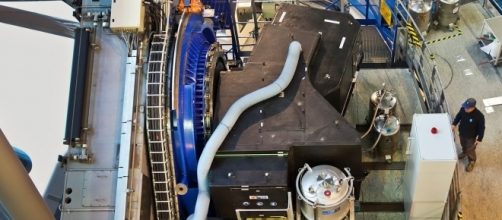A group of researchers at the Max Planck Institute for Astronomy have discovered a new planet named HIP 65426b. This planet is now turning known planetary development theory on its head, with research on it published in "Astronomy and Astrophysics." Also, NASA has finally gotten its newest and closest pictures yet of the Great Red Spot on Jupiter thanks to the Juno Spacecraft.
What is the deal with HIP 65426b?
The team of researchers was able to capture a direct image of HIP 65426b by using the Very Large Telescope's SPHERE instrument, located at the European Southern Observatory's (ESO) Paranal Observatory in Chile.
SPHERE stand for Spectro-Polarimetric High-contrast Exoplanet REsearch instrument and it is a powerful planet-finder.
HIP 65426b is a massive Jupiter-like exoplanet that orbits a fast spinning star. This new planet also had a mass between six to 12 times that of Jupiter's, a radius 1.5 times that of Jupiter's and has a temperature of about 1,000 to 1,300 degrees Celsius (1,832 to 2,372 degrees Fahrenheit). SPHERE's spectrograph detected the presence of water vapor and reddish clouds, with the planet thought to have thick layers of mostly hydrogen gas. This combination of age, mass, and spectral type are extremely rare among known planets.
Researchers were surprised that this young planetary system did not have a disk of dust, not fitting the classic model of planetary formation.
The planet's host star HIP 65426 also has strange qualities that are puzzling astronomers. According to the ESO's measurements, the star is spinning around 150 times faster than our Sun. Researchers have no idea why a single star would need to spin so fast.
New photos of Jupiter's Great Red Spot
NASA's Juno Spacecraft has spent over a year at Jupiter, but for the first time, it has flown directly over the Great Red Spot, one of the best-known landmarks in our solar system.
Juno got the closest view ever of this extraterrestrial cyclone and now the photos it has taken have been shown off by scientists. However, it is not just these new photos that are exciting but the data that Juno will record.
Juno has instruments that are specifically designed to peer through Jupiter's gas cloud to find out what is happening on the planet's surface.
It will still take a while for additional processing to be done to bring out more detail in the images. This also applies to the data from Juno's instruments, which scientists hope will answer key questions about the storm.
First discovery of an exoplanet by SPHERE - HIP65426b is 385 ly from our system and 14 billion km from own star https://t.co/UJTvRuhnxc pic.twitter.com/98XNoGd1g6
— The SETI Institute (@SETIInstitute) July 7, 2017
Raw images from @NASAJuno’s flyby of Jupiter’s #GreatRedSpot are back on Earth! Check them out & help process them! https://t.co/raBScWTzhy pic.twitter.com/YtqncCN0h5
— NASA (@NASA) July 12, 2017
I’m seeing spots! Check out #Jupiter’s #GreatRedSpot in these stunning citizen scientist-processed #JunoCam images https://t.co/FWLvPvIG9h pic.twitter.com/ej2bI9NlDK
— NASA's Juno Mission (@NASAJuno) July 12, 2017


